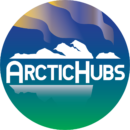Indigenous hubs
The indigenous hubs focus on locations with indigenous knowledge pertaining to reindeer husbandry, fishing, hunting and the traditional use of other natural resources. Indigenous communities live their lives across and parallel to the rest of Arctic society for parts of their sustenance. Simultaneously their lives are influenced by infrastructure and services often developed with someone else, living a different kind of life, in mind. Due to the interconnectedness of indigenous …
